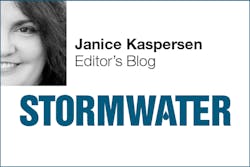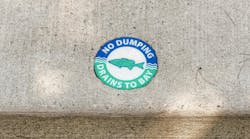
In the 1850s, a Portuguese man named Pedro Carolino set out to create an English phrasebook for his students. The problem? He did not actually speak English himself, and did not have at his disposal a Portuguese-English dictionary. He did, however, have a Portuguese-to-French dictionary and a French-to-English one, and with those he devised a three-step process to create a series of useful phrases his students could employ in situations like shopping, paying social calls, and going to the barber.
The outcome, of course, was a collection of nearly unintelligible, but hilarious, phrases, and the resulting book, English as She Is Spoke, is still in print today, not for its usefulness, but because—as Mark Twain wrote in his introduction to an early version of it—“Nobody can add to the absurdity of this book…. Its immortality is secure.” You can find a facsimile version of the book here.
Why do I mention this in a blog about stormwater? It was just about 10 years ago that we published in Stormwater magazine an editorial by the late, prolific Gary Minton called “Treatment BMP Terminology: A Tower of Babel?” In it he lamented the inconsistency in the stormwater terms we use. “So just what is hydrodynamic separation?” the article began. “In our field we have several names for essentially the same treatment system, different systems with the same name, words without apparent definition, and the misapplication of words.”
He went on to discuss the many variations and meanings of the words swale, biofilter, and several others, and suggested simplifying and clarifying our terms. He followed up in a subsequent issue with a more detailed article offering a recommend framework of his own.
Although he didn’t mention them, we also sometimes have problems communicating with the public in terms of things like utility fees (many people refer to them as taxes, sometimes with the intent of arguing they’re illegal and sometimes simply without understanding the difference) and with concepts like green infrastructure (we know what we mean when we talk about it, but to many people outside the field it seems to refer to any sustainable sort of construction; “green” is a very commonly used—perhaps overused—adjective these days).
Another editorial from the magazine discusses, among other things, the difference between use and reuse of water; many of us—and I’ve certainly been guilty of this—talk about “reusing” harvested rainwater, although, as author Neal Shapiro points out in the editorial, “You cannot reuse something that is being used for the first time.”
Do you think terminology is a problem at all in conveying ideas about stormwater to the public, or to elected officials you might be depending on to give the okay to a stormwater utility or to approve project funding? Every field has its jargon; is ours better or worse than most? If you have examples, please share them in the comments below.
About the Author
Janice Kaspersen
Janice Kaspersen is the former editor of Erosion Control and Stormwater magazines.

